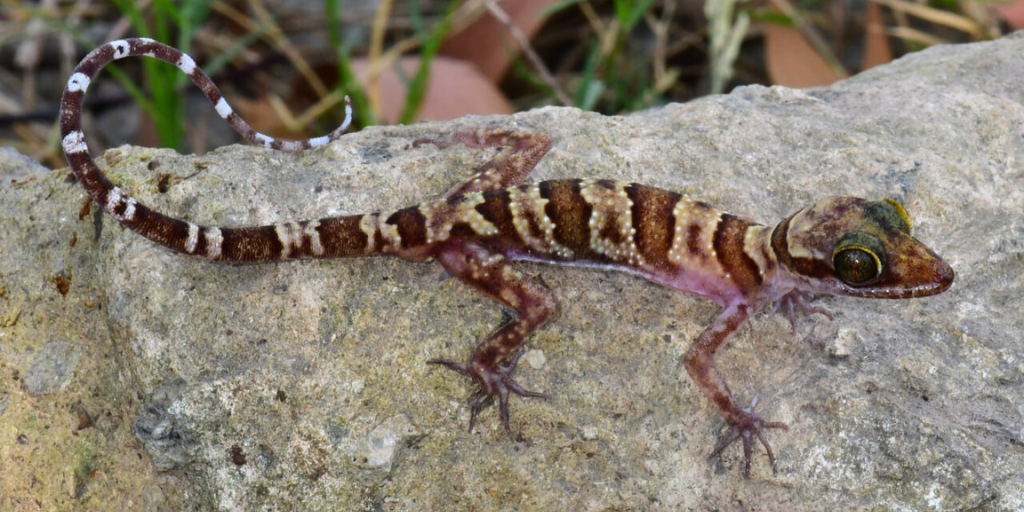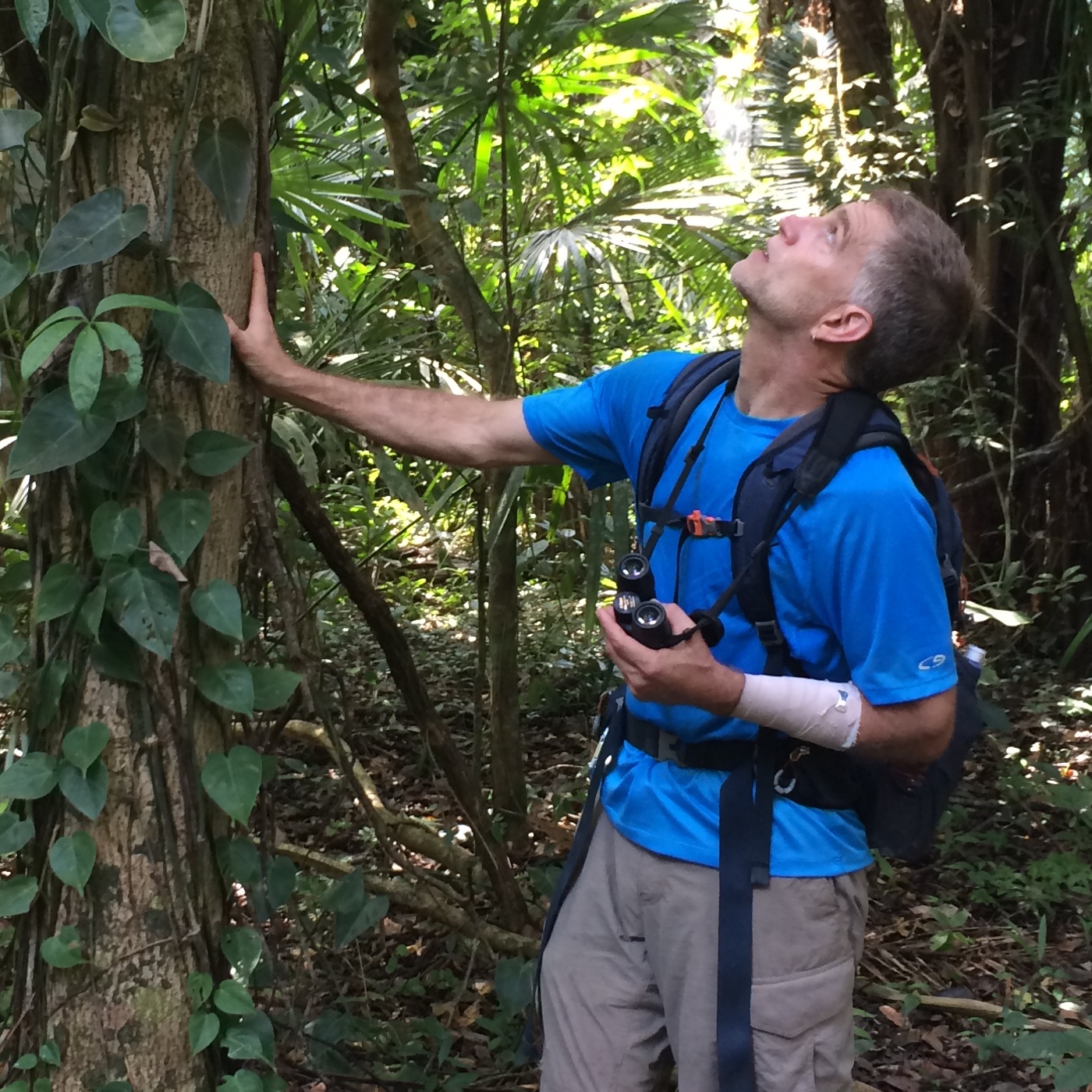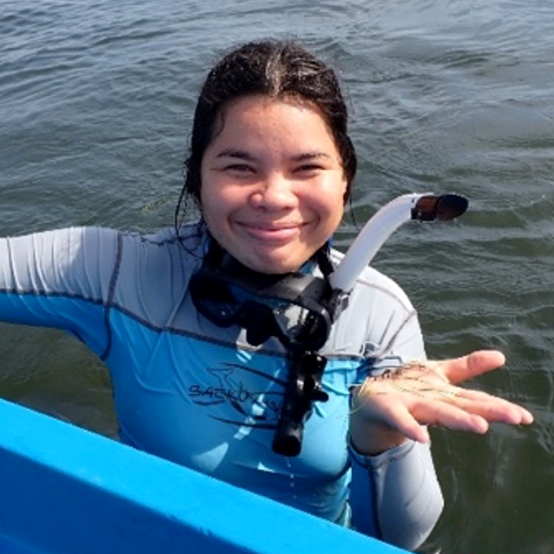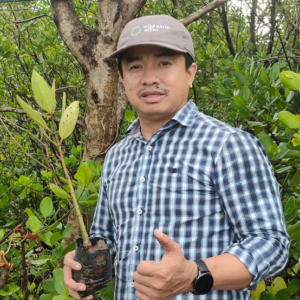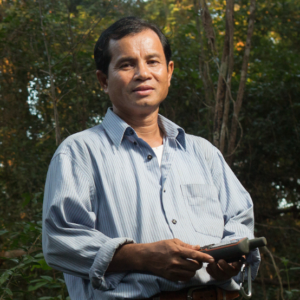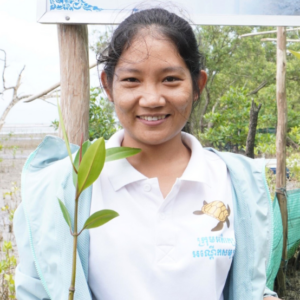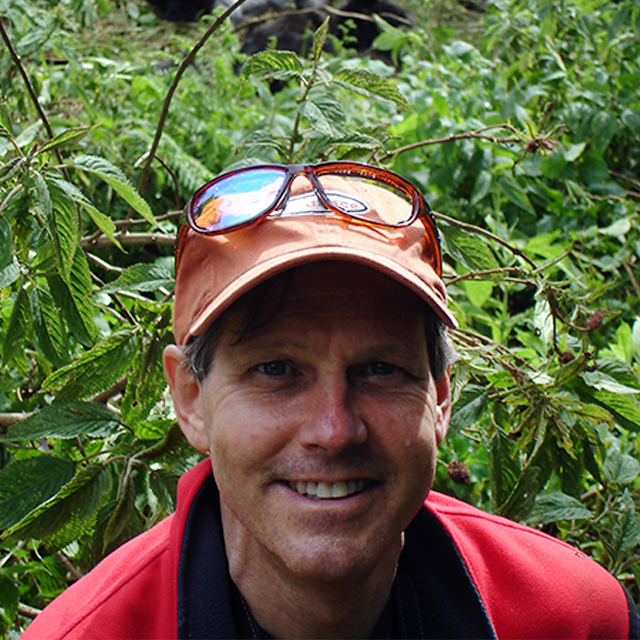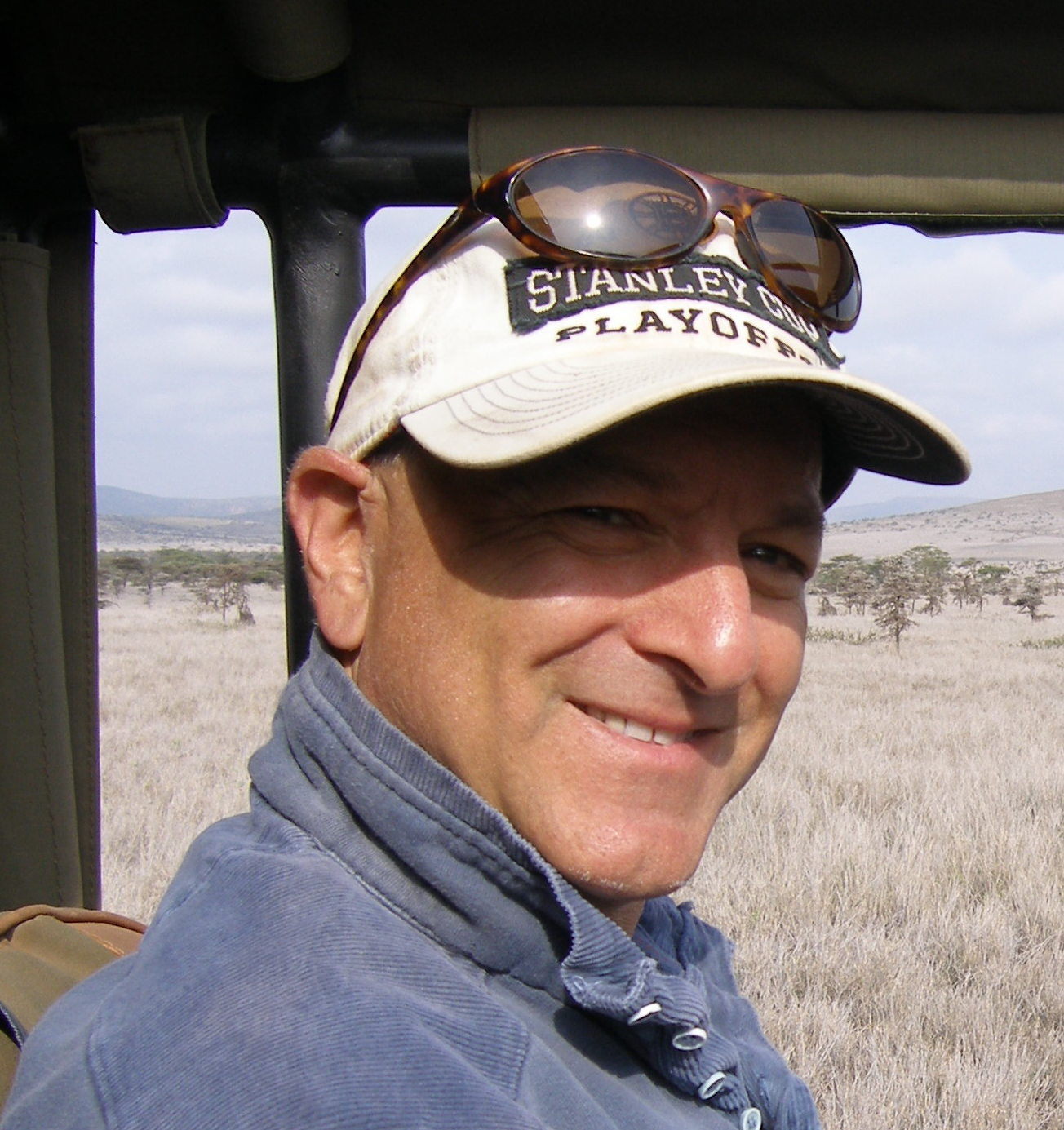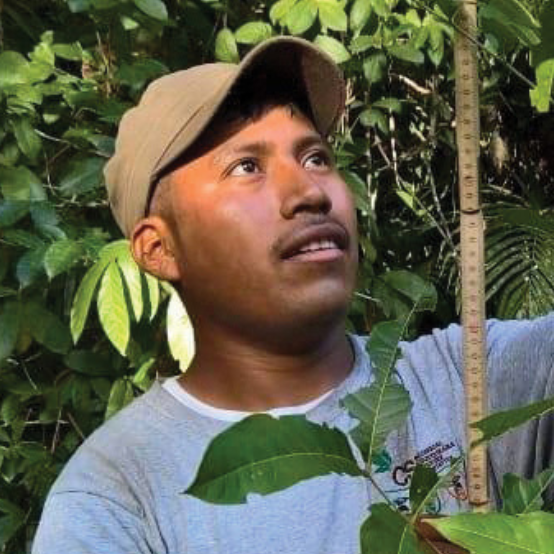Wild Earth Allies proudly collaborated with the Ministry of Environment, the North Carolina Museum of Natural Sciences, IUCN, the Royal University of Phnom Penh, and La Sierra University on the discovery of a new species of bent-toed gecko, the Royal Cave Bent-toed Gecko (Cyrtodactylus regicavernicolus), in southern Cambodia. The gecko was first found at the Phnom Preah Cave Royal Natural Heritage Site in Kampot Province.
“We are thrilled by the discovery of this new bent-toed gecko in Cambodia,” said Wild Earth Allies Conservation Manager Neang Thy, a key member of the research team. “Working as a team of Cambodian and international partners allowed us to successfully describe this new species.”
The Research Team’s Analysis
Neang joined a team of researchers, including Dr. Chhin Sophea from the Ministry of Environment, Dr. Bryan Stuart of the North Carolina Museum of Natural Sciences (NCMNS), and Dr. Lee Grismer of La Sierra University. Their comprehensive analysis to describe the new species required detailed morphological characteristics, mitochondrial DNA analysis, and statistical proof of the species’ uniqueness.
The researchers believe the species to be highly specialized and found nowhere else in the world. The findings, published in the journal of Zootaxa, highlight Cambodia’s rich biodiversity.
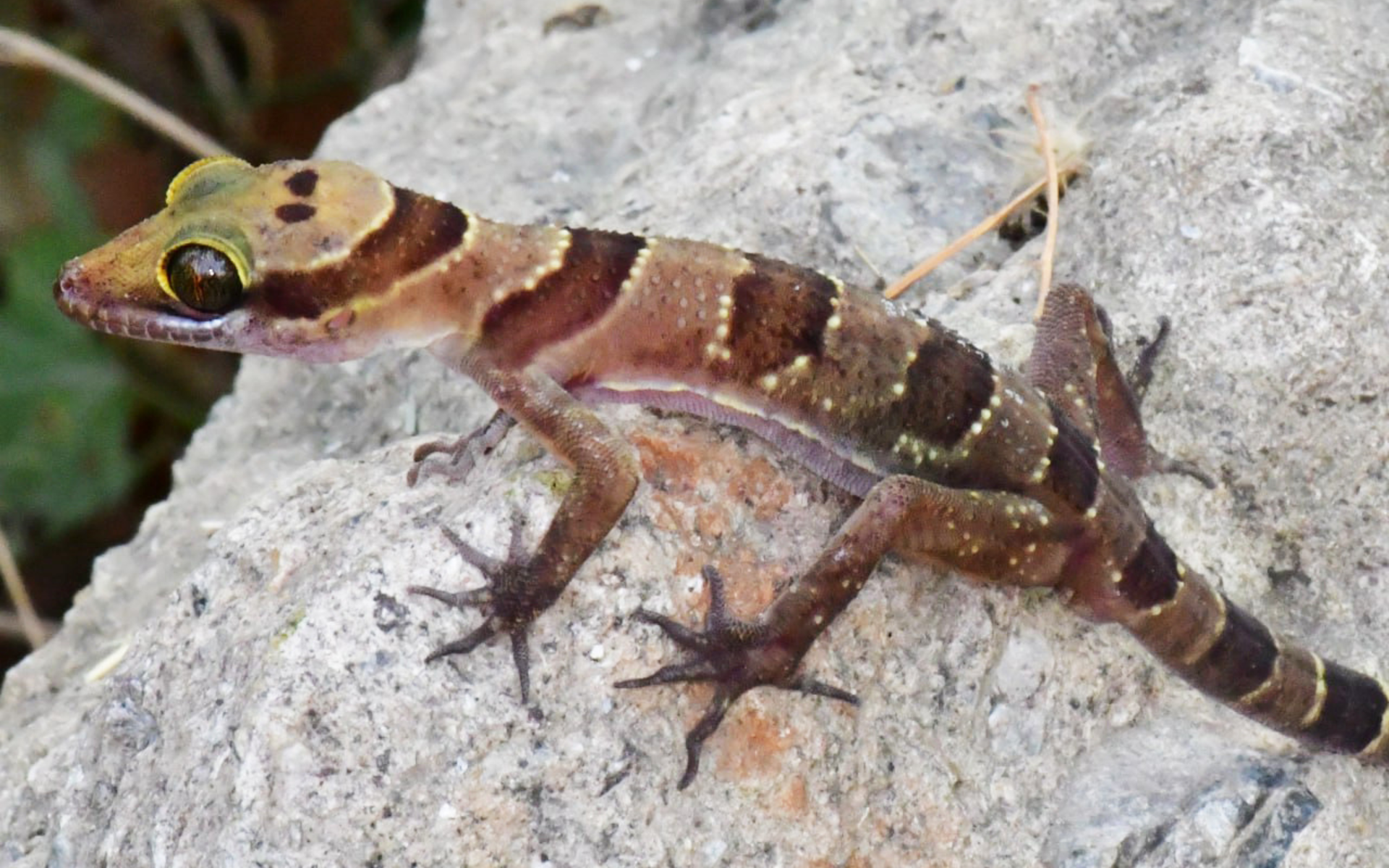
The Royal Cave Bent-toed Gecko (Cyrtodactylus regicavernicolus) (Photo by Neang Thy)
Neang Thy’s Contributions to Herpetology
Neang has extensive experience in the discovery of new species. In 2019, he found and described another bent-toed gecko (Cyrtodactylus phnomchiensis) in Prey Lang Wildlife Sanctuary, also with Dr. Bryan Stuart. To date, Neang has helped identify and/or describe 29 new species, with more announcements coming soon.
“I’ve had the privilege of working with Neang Thy on the biodiversity of amphibians and reptiles in Cambodia since 2003,” said Dr. Bryan Stuart. “This collaboration has been one of the most rewarding experiences of my career. When I first began working in Cambodia, there were no national scientists with serious expertise in amphibians and reptiles. But today, Thy is an independent, professional herpetologist who has made extraordinary contributions to the knowledge of biodiversity in his country.”
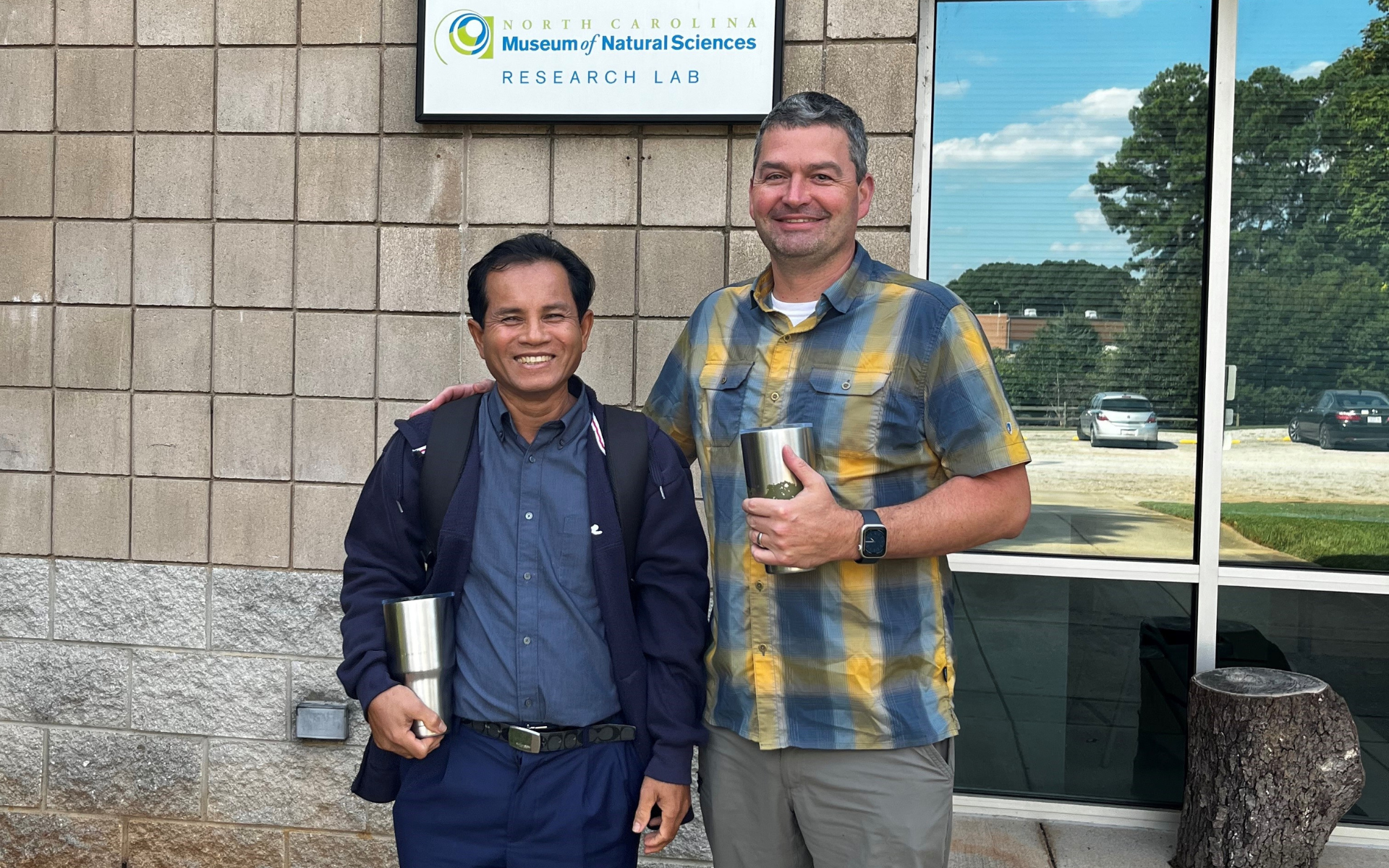
Neang Thy of Wild Earth Allies and Dr. Bryan Stuart of the North Carolina Museum of Natural Sciences
Protecting a Rare Limestone Habitat
The Royal Cave Bent-toed Gecko lives in a rare habitat of limestone caves that dot southern Cambodia. Neang noted that this finding suggests other new species could be waiting to be discovered in the caves. These limestone formations are in high demand for concrete production, which seriously threatens the future of this species and many others like it.
Fortunately, the Cambodian government has protected a 25-hectare area where the gecko was discovered. While much about the Royal Cave Bent-toed Gecko remains unknown, this species moves up to 20 meters (65.6 feet) deep into caves during the day and emerges at night to feed near the cave entrance.
This discovery brings the total number of bent-toed gecko species to 10 in Cambodia and 360 worldwide.

